There are so many fruits that dogs can and cannot eat, which often leaves dog owners scratching their heads on ‘what fruits can dogs eat?’
Exposing your dog to a variety of new flavors will make their feeding more interesting and also help them to ingest naturally occurring nutrients.
We’ve put together a list of all the fruits that are safe for dogs and their major nutritional content. This article will assist you to make a guided decision on what’s right for your doggo.
A Few Things to Keep in Mind
The first thing you should know before feeding your dog any fruits is that not all fruits are safe. Also, some fruits have parts that are not good for dogs’ consumption.
Dogs’ digestive systems are different from humans, so they can’t tolerate the same foods that we do. Dogs also can’t break down certain nutrients that humans can, so it is important to know which fruits are off their limit.
Fruits that have too much sugar should be fed with caution because they can lead to weight gain if ingested in excess.
Not all fruits that are safe for dogs will be okay for your pup. Some other factors will also affect how your dog eats fruits like when your dog is on a restricted diet.
If you’re intending to feed your dog some fruits, you need to check with your vet to make sure they don’t have any health issues that might complicate things on the side of your pup
What Fruits Are Good for Dogs? Here Are the Top 13
1. Apples

Apples are rich in fiber, which is good for digestion. They also contain phytochemicals with antioxidant properties, and vitamins C and A.
Be sure to peel the apple before you give it to your dog. The skin is pretty tough, and it can be difficult for a dog to chew and digest. Sometimes it can get stuck between their teeth.
Dogs should not eat the seeds and the core of an apple because they have small amounts of cyanide, which is toxic to dogs.
2. Banana
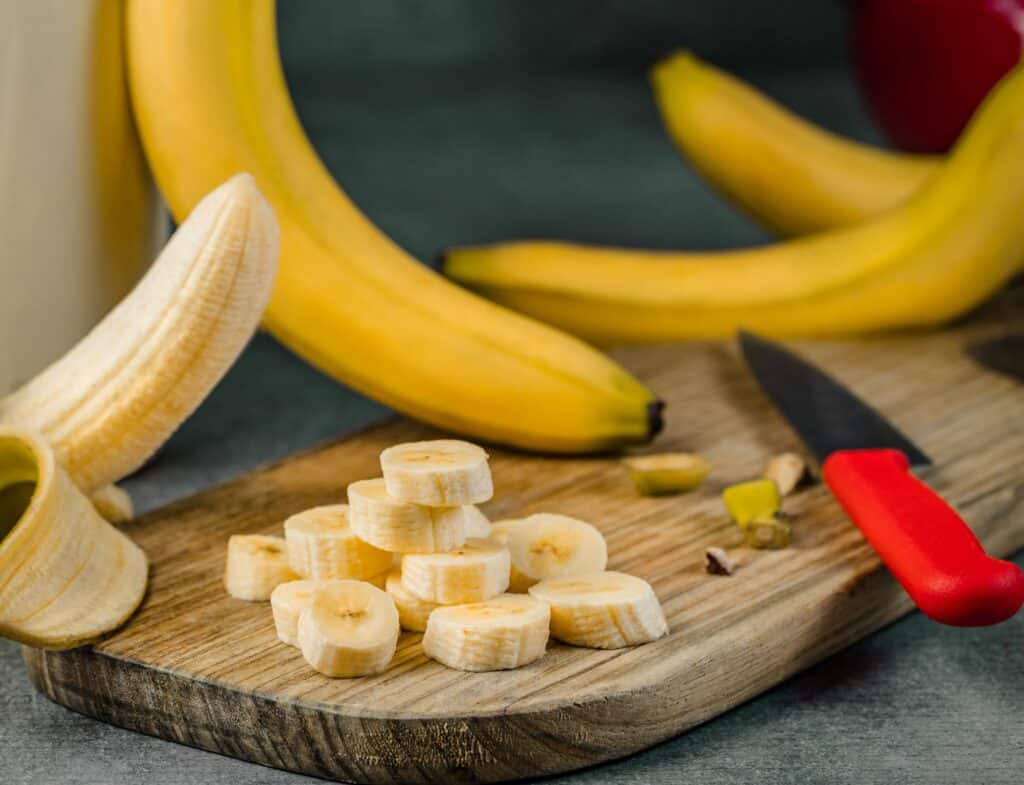
Bananas are filled with potassium, which is an excellent nutrient for your dog’s cardiovascular health. They also contain plenty of fiber, making them good snacks for dogs with digestion issues.
However, bananas contain a lot of sugar, so you should only feed them moderately and in small doses.
Dogs should also not eat banana peels since they are difficult to chew and they are almost indigestible. This might cause an intestinal blockage which can be very dangerous.
3. Blueberries
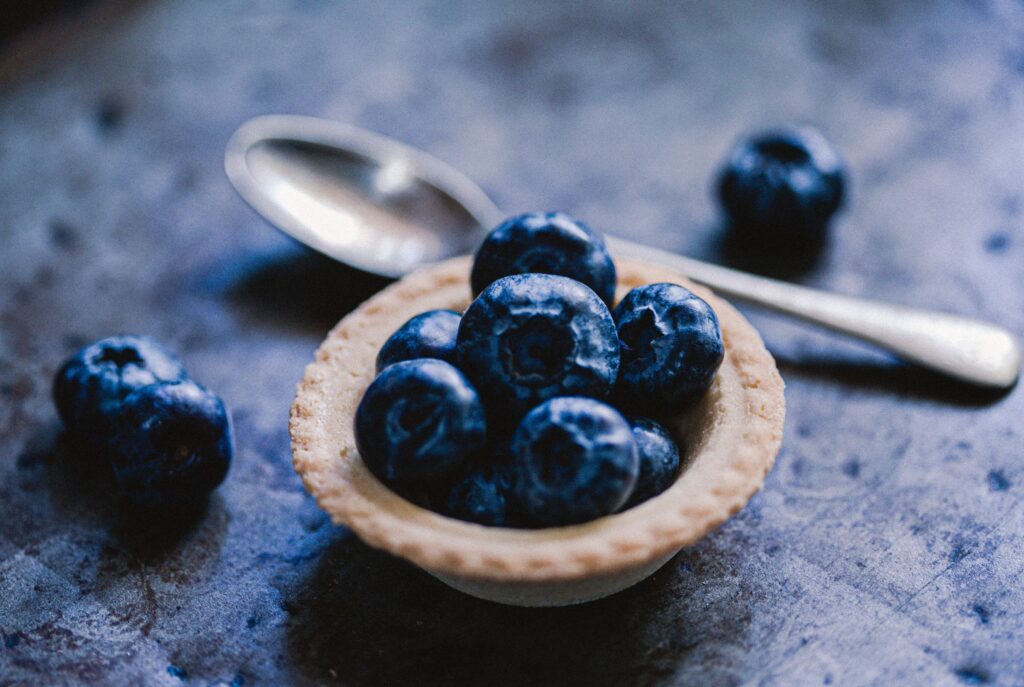
Blueberries are a healthy and tasty choice for dogs as long as you don’t overfeed them. These berries are especially good for elderly dogs because they’re high in antioxidants that help to slow down the signs of aging.
Blueberries are also moderate in sugar and are beneficial for your pooch’s eyes, heart, and joints. These fruits have also been found to improve night vision and mental health in dogs.
Make sure you feed your dog fresh blueberries because the canned ones might contain too much sugar and preservatives.
4. Cantaloupe

If you’re looking to satisfy your dog’s sweet tooth, then cantaloupe is an excellent choice. This delicious melon is also packed with vitamins A and C, which are both excellent for your dog’s immune system.
You can feed your dog cantaloupe either in chunks or as a puree since it’s pretty soft and easy to digest. It is best served chilled during the hot days to help your dog cool down.
Just keep in mind that too much cantaloupe can cause your dog’s digestive system to become overburdened, so don’t feed it too often.
5. Mango
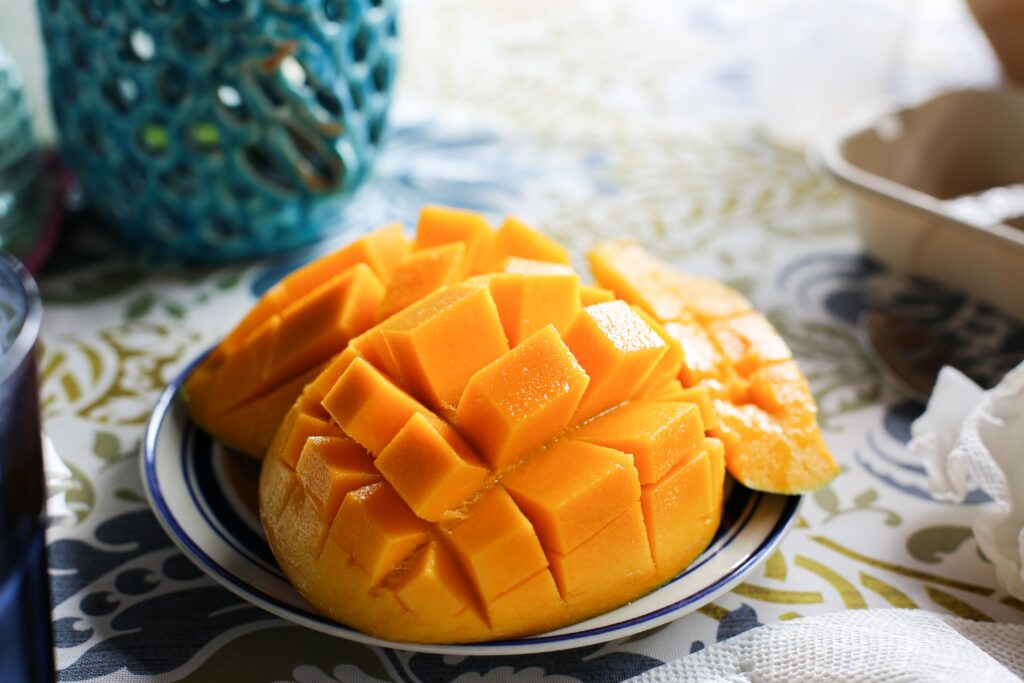
Mango is a sweet and delicious treat that many dogs will easily love. They are packed with good amounts of vitamins, potassium, and iron.
Other nutrients are folate, a vitamin B complex, and carotenoids which promote healthy skin & eyes.
In addition to being yummy, mangoes are a good source of fiber which helps prevent digestive problems like constipation or diarrhea in dogs.
Make sure to remove the skin and pit because they present a choking hazard and contain small amounts of cyanide.
6. Oranges

Oranges are a healthy fruit that dogs can eat. This tasty citrus fruit is packed with Vitamin C, which is beneficial for your dog’s immune system.
Oranges also contain a little bit of potassium, which is great for your dog’s kidneys and urinary tract.
Although oranges are safe to feed your dog, you should be careful with the amount you feed them because they are high in citric acid and sugar.
Be sure to remove the peels and seeds before giving your dog this citrus fruit. Orange seeds contain trace amounts of cyanide and it can be toxic to dogs when ingested.
7. Papaya
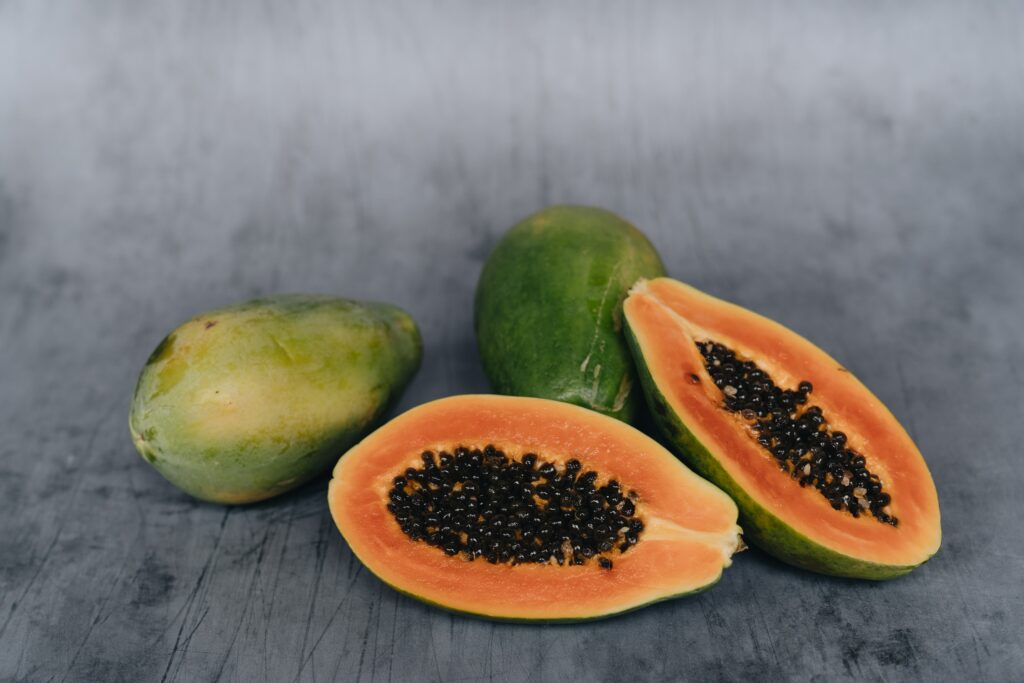
Papaya is a tropical fruit that is delicious and great for your dog’s digestive system. Papaya contains plenty of fiber and helps with keeping the digestive system in good shape.
It also contains a bit of Vitamin C, which is great for your dog’s defense against diseases. Papaya is also one of the fruits dogs can eat that’s high in sugar, so don’t feed it too often.
Dogs should not eat papaya skin and seeds.
8. Pineapple
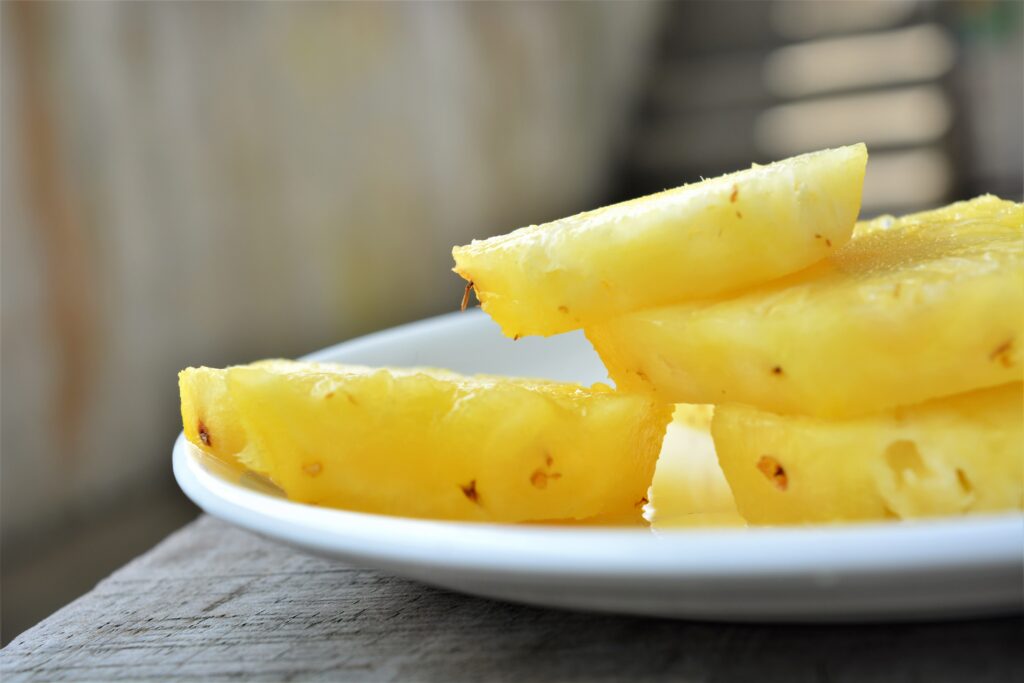
Pineapples are a good source of vitamin C, manganese, and fiber which can help with digestion. They’re also an excellent source of potassium and vitamin A. If your dog has digestive problems or is overweight, pineapple could be the perfect treat to support their health.
Dogs should not eat the spiky pineapple skin and the fibrous core in the middle. These parts are hard to chew.
9. Plums
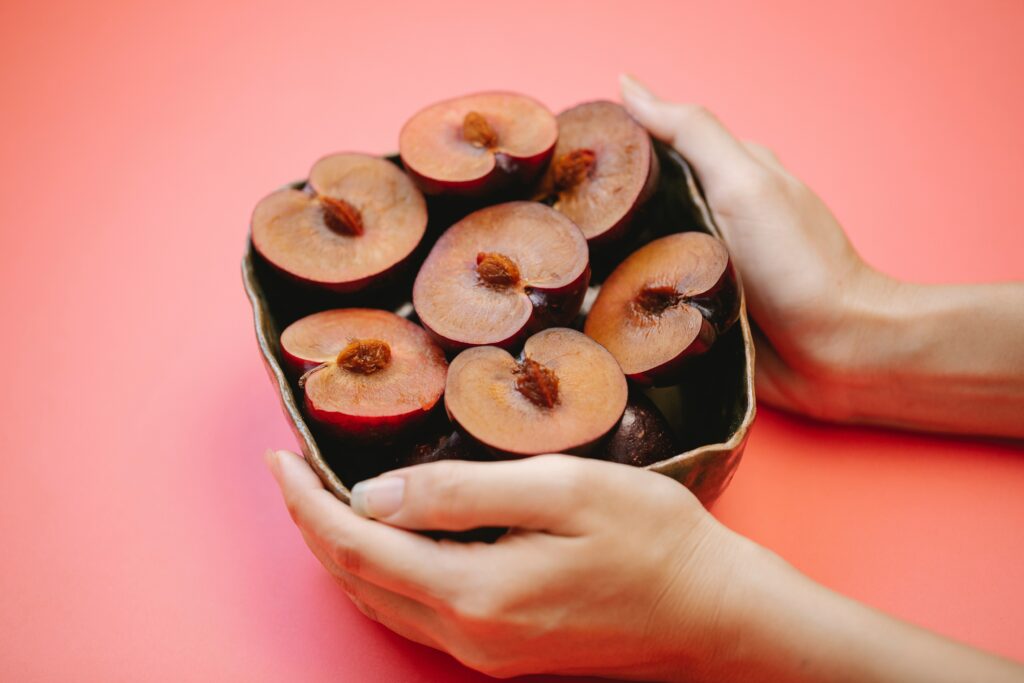
Plums are safe for dogs to eat, but you should only give your dog a small piece at a time. And if your dog is prone to stomach problems, you should avoid giving them plums altogether.
Plums are a good source of fiber, and they also contain vitamins A and C. They’re low in calories and sugar, and they’re a great snack option for dogs who are trying to lose weight.
Make sure to remove the pit and stem since they contain substances that are toxic to dogs.
10. Raspberries

Raspberries are packed with dietary fiber, antioxidants, vitamins C and B6, potassium, and small amounts of proteins which are great for dogs.
These red berries are also low in calories and sugars hence they can be a good treat for dogs to maintain their weight.
Raspberries have anti-inflammatory properties which is particularly helpful for elderly dogs to calm down aging joints.
However, raspberries are very acidic and can damage your dog’s teeth if eaten too frequently. If your dog likes these fruits, make sure to brush their teeth regularly to prevent the build-up of tartar.
11. Kiwi

Kiwi is chock-full of vitamin C which is very helpful in building your dog’s immunity against diseases. They also contain dietary fiber, vitamins E, and K, and some bits of protein.
Dogs should not eat kiwi seeds since they contain small quantities of cyanide that could potentially be toxic if eaten in large quantities. You should also remove the skin because it presents a choking hazard, especially to small dogs.
12. Strawberries

Strawberries are an excellent choice for dogs because they contain plenty of fiber and a bit of Vitamin C.
Strawberries are also a good source of antioxidants, manganese, magnesium, and potassium.
However, don’t feed your dog the leaves and stems of the strawberries because they may contain too many pesticides.
13. Watermelon
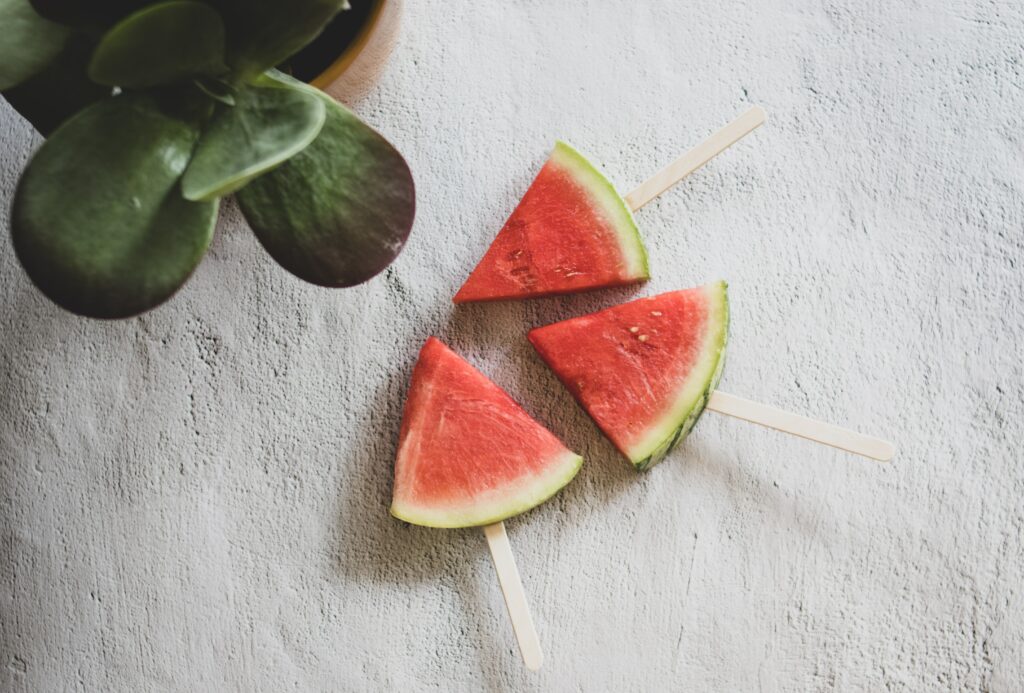
Watermelon is another delicious summertime treat that is low in calories and contains a ton of water (92%), which is great for keeping your dog hydrated.
Watermelon is also a good source of lycopene, an antioxidant that may help combat certain types of cancers and cardiovascular diseases in dogs.
However, don’t feed your dog the seeds & rind because they’re too hard to chew and almost indigestible. The rind may also contain too many pesticides which can be toxic if ingested.
The Best Ways to Prepare Fruits for My Dog
The first thing is always to wash the fruit thoroughly with clean water to remove dirt and pesticides.
You can then peel the fruit and remove other parts that are not safe for dogs. Once done, feel free to serve your dog in any of the following ways:
1. Small pieces
Cut the whole fruit into small pieces that your dog can handle. Big fruit chunks will have a choking hazard to your dog – especially small ones. Be sure to get the most appropriate size for your pup.
2. Blended
You can blend the fruit and give it plainly to your dog or use it to spice up their dry foods. This is especially useful for puppies and small dogs.
3. Smoothie
Feel free to pick a selection of your dog’s favorite fruits and make a smoothie for them. You can add other safe foods for dogs to make it more interesting.
4. Mashed
Some fruits are best served when mashed to a consistent puree, for example, bananas. This is a great way to prepare fruits that puppies can eat.
5. Frozen
You can freeze your mashed or blended fruits and stuff them into your dog’s Kong for added fun. This is also a great way to preserve fruits that may easily go bad.
Stick To Fresh Fruits
The best way to give fruits to your dog is to use fresh ones instead of the canned variety. Fresh fruits are packed with naturally occurring nutrients that are beneficial to dogs.
Canned fruits are formulated with additional sugar, syrup, and sometimes xylitol – which is toxic to dogs, and chemical preservatives which can be toxic too.
This also applies to juices. Do not give your dog commercial juice because they contain too much sugar and preservatives. If you want your dog to enjoy a chilly juice sip, just prepare it at home.
FAQs On Dog-Safe Fruits
1. Can I mix fruits for my dog?
Yes, you can mix different types of fruits for your dog. If your canine pal is picky in what they eat, then it is a good idea to serve them a mixed fruit treat.
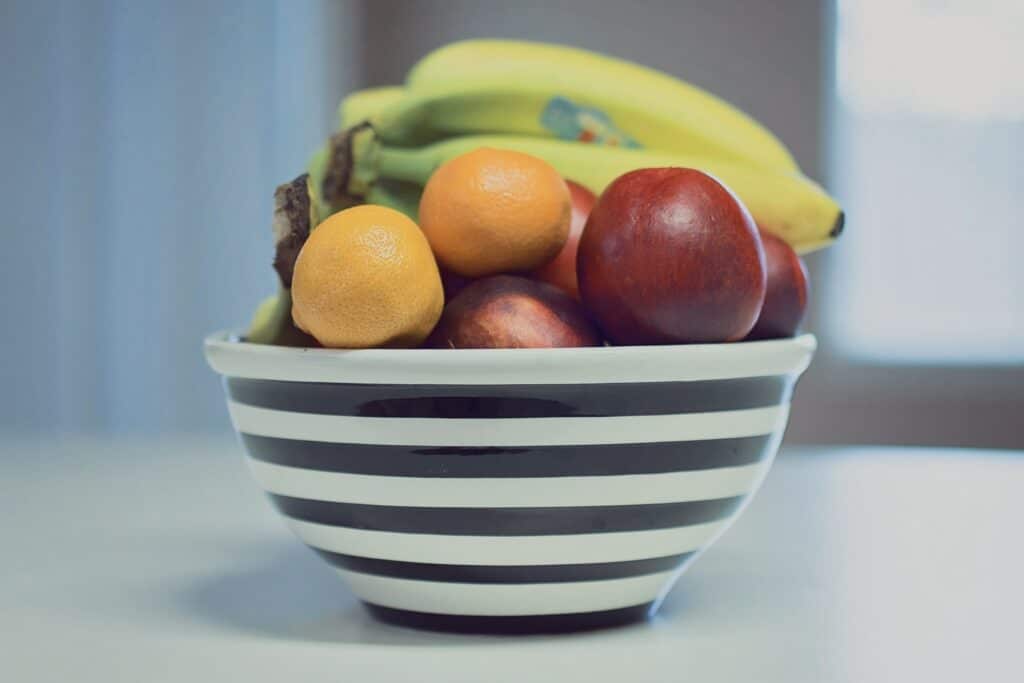
Mixing fruits is also a great way to dilute the sugars and acidity in some fruits. This ensures that your pup gets what they need without subjecting them to further risks.
2. How much fruit should I give my dog?
It is important to note that fruits should only be used as treats and not the main dog’s food. Dog treats should make up only 10% of their food intake while the 90% should come from a well-balanced diet.
The amount of fruit that your dog should eat depends on their size, age, and type of fruit. While you strictly observe the 10% rule, be careful with fruits that have too much sugar and acids. In most cases, large dogs should eat 1 cup of fruit per day while small dogs can manage ½ cup.
A good way to introduce fruits to your furry friend is to start with small portions. Do this while you monitor your dog for potential side effects.
Your pooch could as well be allergic to some fruits, so it is good to know this early enough to prevent severe effects.
3. What will happen if my dog eats too much fruit?
Fruits can have adverse effects on dogs if they eat more than they should.
The most common symptom that may arise is diarrhea. But your dog could also vomit, bloat, get stomach acid reflux, have heartburn, have digestive discomfort, or get an upset stomach.
These side effects could arise because the fruit is too sweet or acidic, or because it contains something that disagrees with your dog’s sensitive stomach.
If this happens, try giving them a small amount of water mixed with some honey to help settle their stomach.
You can induce vomiting by using 1 teaspoon of 3% hydrogen peroxide solution for small dogs and 3 teaspoons for large ones.
You can also use 1 tablespoon of activated charcoal mixed with 1 cup of warm water to help absorb any excess gas and adsorb the toxins in your dog’s system
If your dog does not seem to get better within 15 minutes, then you should call your vet right away for diagnosis and treatment.
In Conclusion
If you’ve ever asked yourself ‘What fruits can dogs eat?’ then you now have plenty of options at your disposal. These fruits are a good way to add nutritional value to your dog’s meals.
Remember, every dog is different so it’s important to adjust their fruit intake according to what they need and can handle.
If any of these fruits seem too sweet or acidic for your dog, then don’t hesitate to mix them with some bland foods.
Once again, we recommend always keeping an eye on your dog’s health and feeding them fruits in moderation. Happy feeding!
Laura is the founder of Furs'n'Paws. She is a also a pet writer and expert with more than 20 years of experience of working with dogs and cats. She developed a very strong love for animals at a young age. Her passion led her to establish a thriving pet sitting and dog walking business in Dubai. As an expert in pet training, behavior, and nutrition, Laura is committed to helping pet owners and pet lovers by offering high-quality information on a wide range of topics.


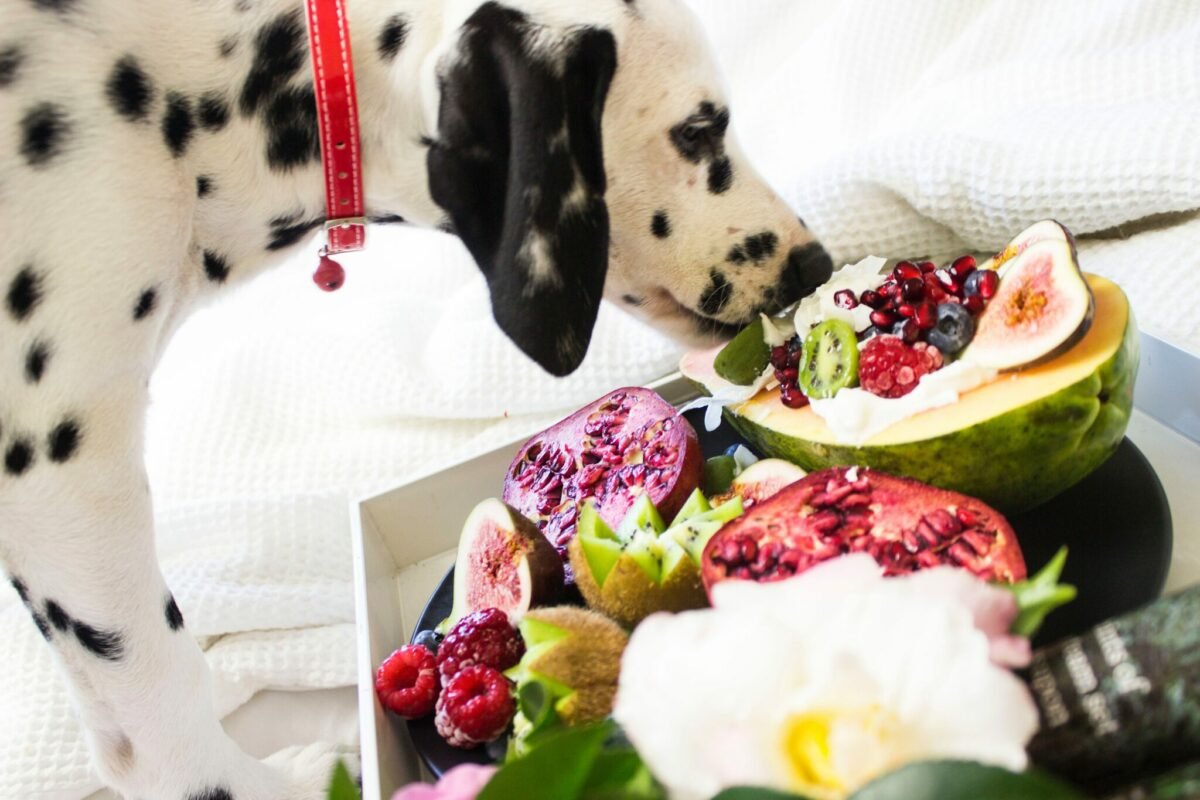
No responses yet